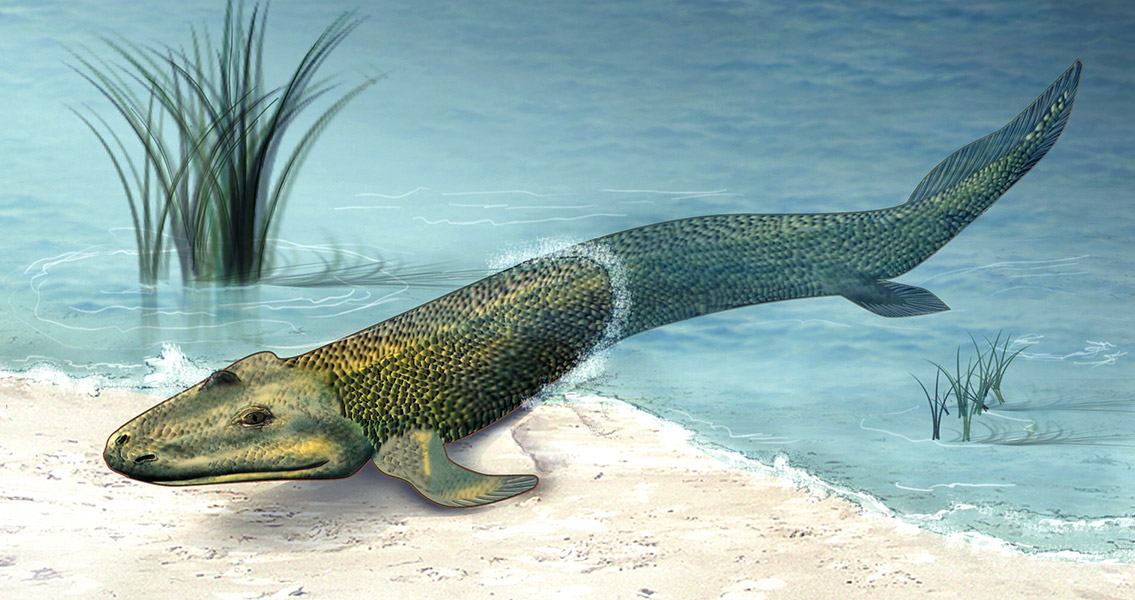<![CDATA[The move from a body designed for navigating and breathing in water to one capable of navigating land happened between 360 and 390 million years ago, and is possibly the most profound event in evolutionary history. The general consensus is that this event (the origin of vertebrates known as tetrapods) would have triggered a more rapid rate of diversification for “four-legged” creatures. New research indicates however, that the limbs of tetrapods were no more structurally diverse than the fins of their water-bound ancestors. Previous beliefs held that when an organism evolves new features (referred to as “key innovations”) enabling them to take advantage of new environments the creature's rate of diversification and evolution typically increases - as happened with the evolution of dinosaurs to birds for example. The authors of this study set out to determine exactly how substantial the transition from fish to tetrapod was by analyzing a variety of different limb and fin skeletons and what they found was early tetrapods and fish were actually very similar in the levels of anatomical diversity they developed within their limbs and fins, even with very different skeletons. Tetrapods – from the superclass Tetrapoda (meaning four-footed in Ancient Greek) – consists of the first four-limbed vertebrates as well as their descendants and includes reptiles, amphibians, birds, and mammals. They evolved in the middle of the Devonian period, which started approximately 419.2 million years ago and lasted until the start of the Carboniferous Period, around 358.9 million years ago. The research conducted by Dr. Marcello Ruta (School of Life Sciences at the University of Lincoln) and Professor Matthew Wills (Milner Centre for Evolution at the University of Bath, U.K) was focused on how quickly tetrapods diversified to new skeletal structures. As expected, early tetrapods did evolve limbs which were more diverse and complex than fins. What was suprising is that their fish-like predecessors were also evolving an extraordinary selection of subtle yet varying traits as well. These variations may be evidence of biomechanical functions in fins previously unsuspected and despite the fact that these distant relatives lived exclusively in the water. In regards to the evolution of the early tetrapods, their key innovations did not result in quick and greater anatomical variations. When legs evolved to realize their new functions they not only had to have the ability to support the body weight on land, they were also required to provide the animal with the ability to walk. This dual requirement may have hindered the ways in which these early legs could evolve and function, thus limiting the range of variations, The impact of the study on the analysis of both past and present biological systems, specifically in regard to key diversification events, is deep. It’s possible that further study will reveal that the first tetrapods behaved differently than other organisms, or perhaps it’s an indication that while key innovations enable change, sometimes they still take millions of years to come to fruition. ]]>
The Evolution of Fins and Limbs More Similar Than Originally Believed
